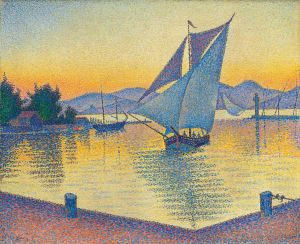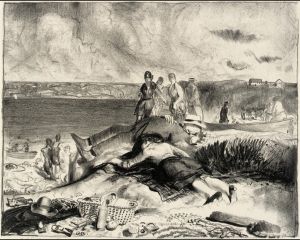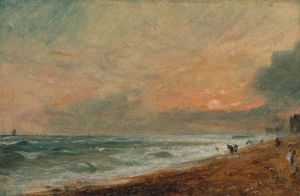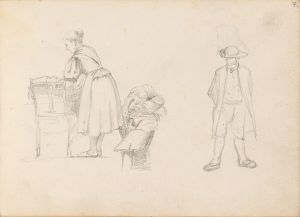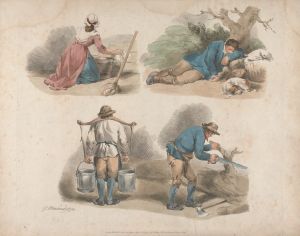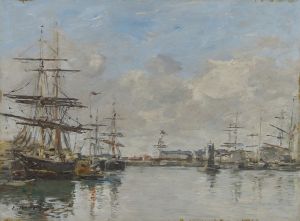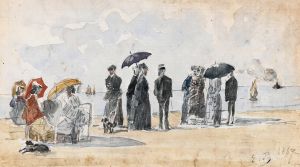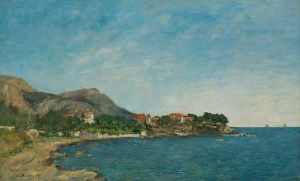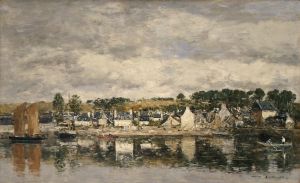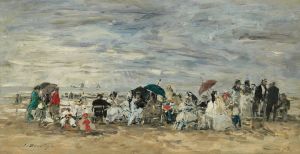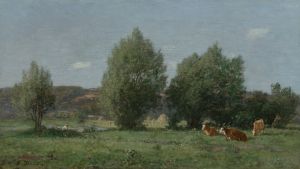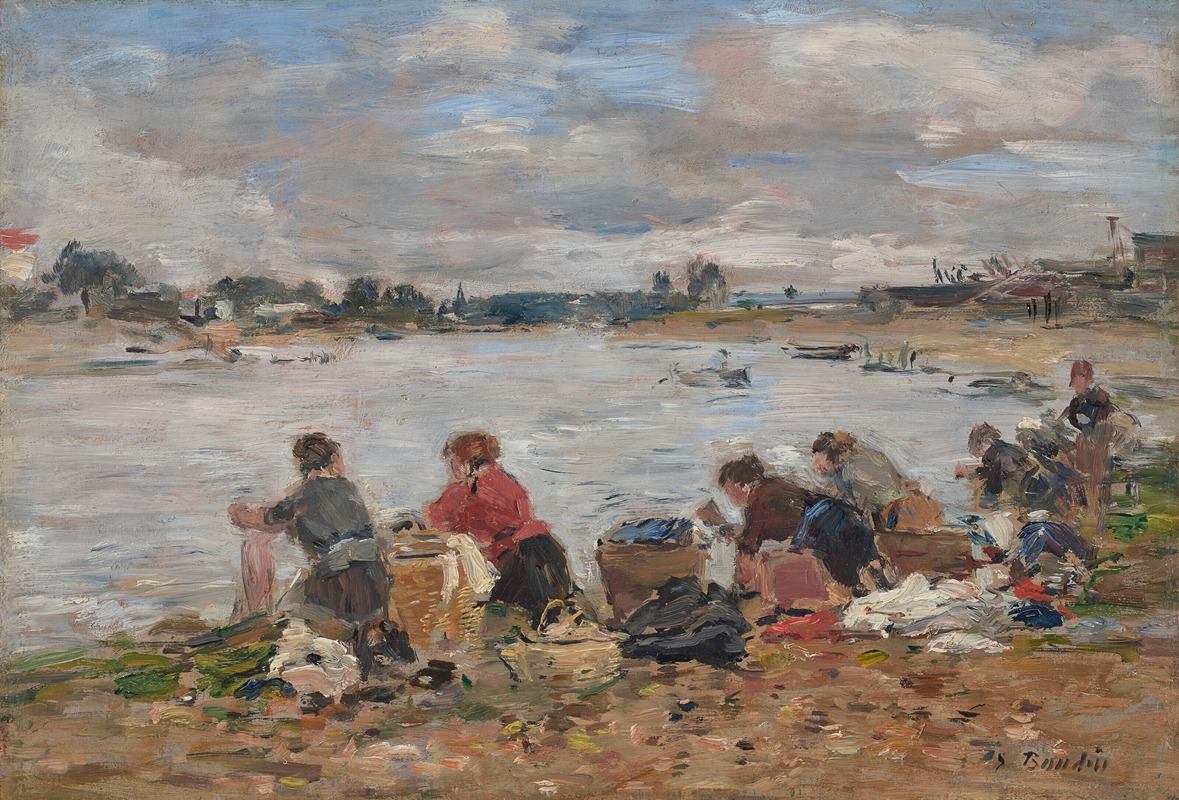
Laveuses au bord de la Touques
A hand-painted replica of Eugène Boudin’s masterpiece Laveuses au bord de la Touques, meticulously crafted by professional artists to capture the true essence of the original. Each piece is created with museum-quality canvas and rare mineral pigments, carefully painted by experienced artists with delicate brushstrokes and rich, layered colors to perfectly recreate the texture of the original artwork. Unlike machine-printed reproductions, this hand-painted version brings the painting to life, infused with the artist’s emotions and skill in every stroke. Whether for personal collection or home decoration, it instantly elevates the artistic atmosphere of any space.
Eugène Boudin, a French painter renowned for his contributions to the development of Impressionism, created the painting Laveuses au bord de la Touques (translated as Washerwomen on the Banks of the Touques). This artwork is an example of Boudin's dedication to capturing scenes of everyday life and his mastery in portraying the interplay of light, water, and atmosphere.
The painting depicts a group of washerwomen working along the banks of the Touques River, a waterway located in the Normandy region of France. This area was a frequent subject in Boudin's works, as he often painted landscapes and coastal scenes in Normandy, where he was born and spent much of his life. The Touques River flows through several towns in the region, including Deauville and Trouville, both of which were popular destinations for artists and tourists during the 19th century.
Boudin's choice of subject matter reflects his interest in the daily lives of ordinary people, particularly those engaged in labor or leisure near the water. In Laveuses au bord de la Touques, he captures the washerwomen in a naturalistic and unembellished manner, emphasizing their connection to the surrounding environment. The composition highlights the reflective surface of the river, the soft light of the sky, and the earthy tones of the riverbank, demonstrating Boudin's skill in rendering atmospheric effects.
The painting is executed in Boudin's characteristic style, which combines elements of realism with a loose, fluid brushwork that anticipates the techniques of the Impressionists. His ability to depict the transient qualities of light and weather earned him the admiration of his contemporaries, including Claude Monet, who considered Boudin a mentor and a significant influence on his own artistic development.
While the exact date of Laveuses au bord de la Touques is not specified, it is consistent with Boudin's body of work from the mid-to-late 19th century, during which he frequently explored similar themes and settings. The painting is part of Boudin's broader oeuvre that celebrates the natural beauty of Normandy and the rhythms of life along its coasts and rivers.
Today, Eugène Boudin is regarded as a pivotal figure in the transition from traditional landscape painting to the Impressionist movement. His works, including Laveuses au bord de la Touques, continue to be appreciated for their poetic depiction of light, atmosphere, and the human connection to nature.





